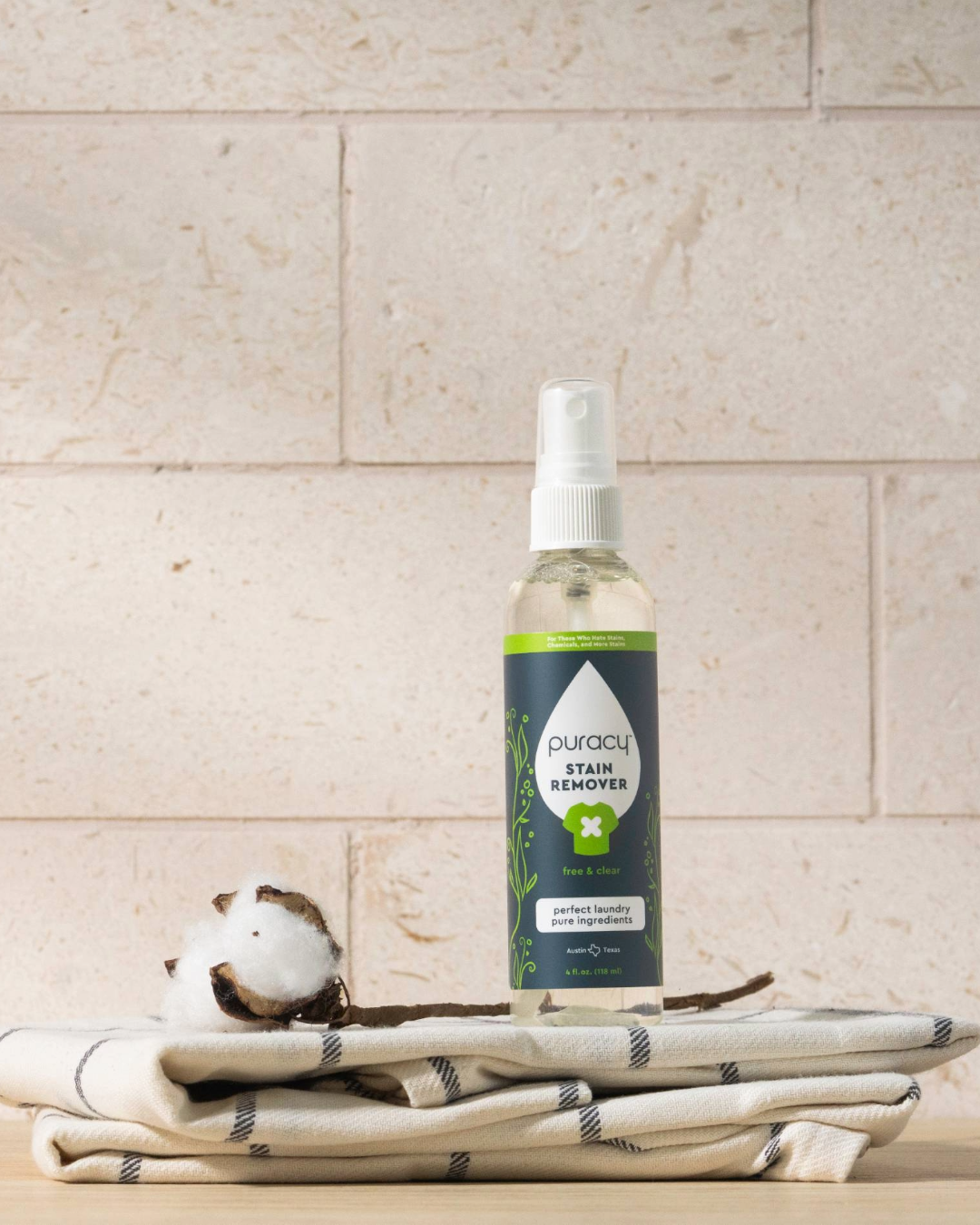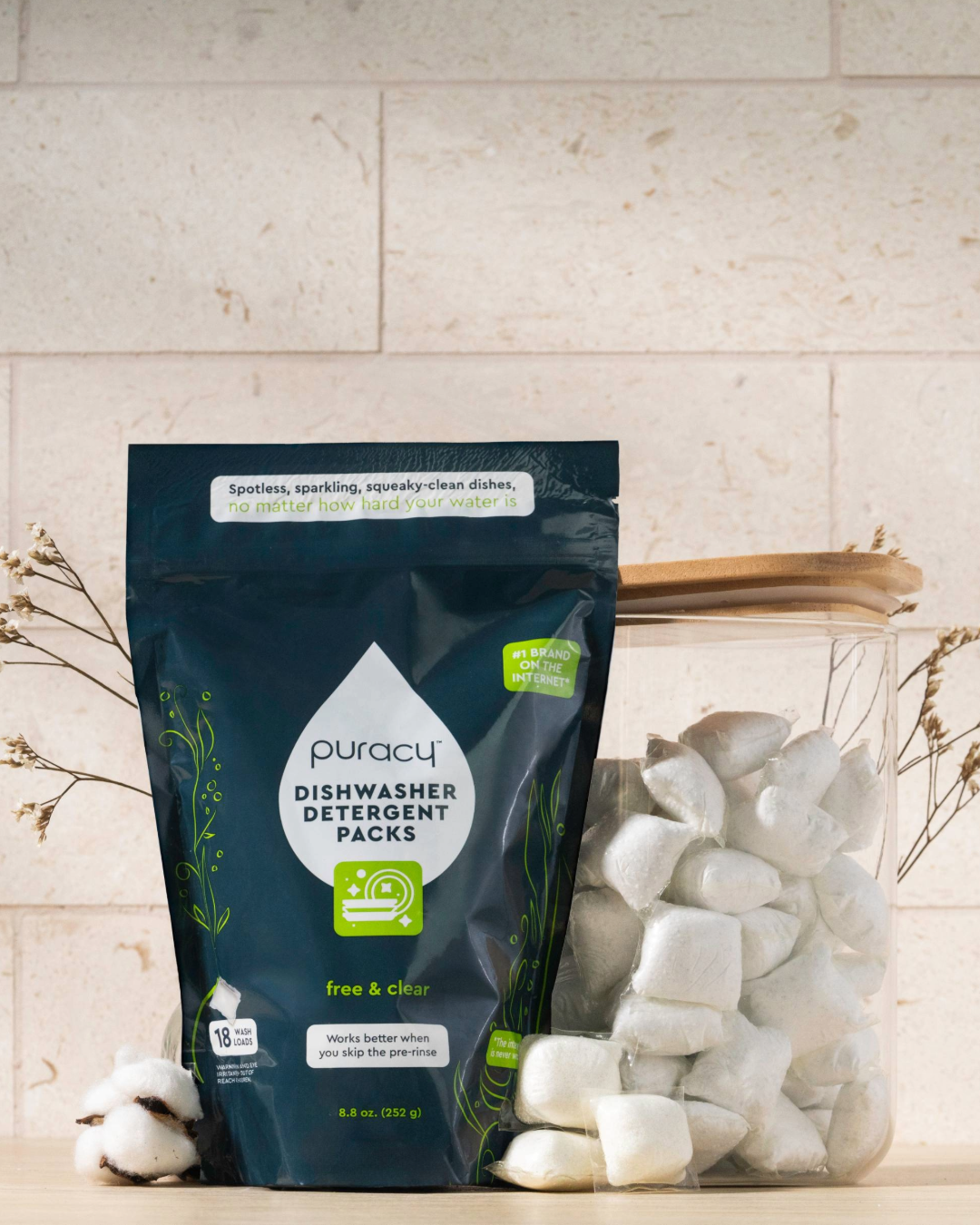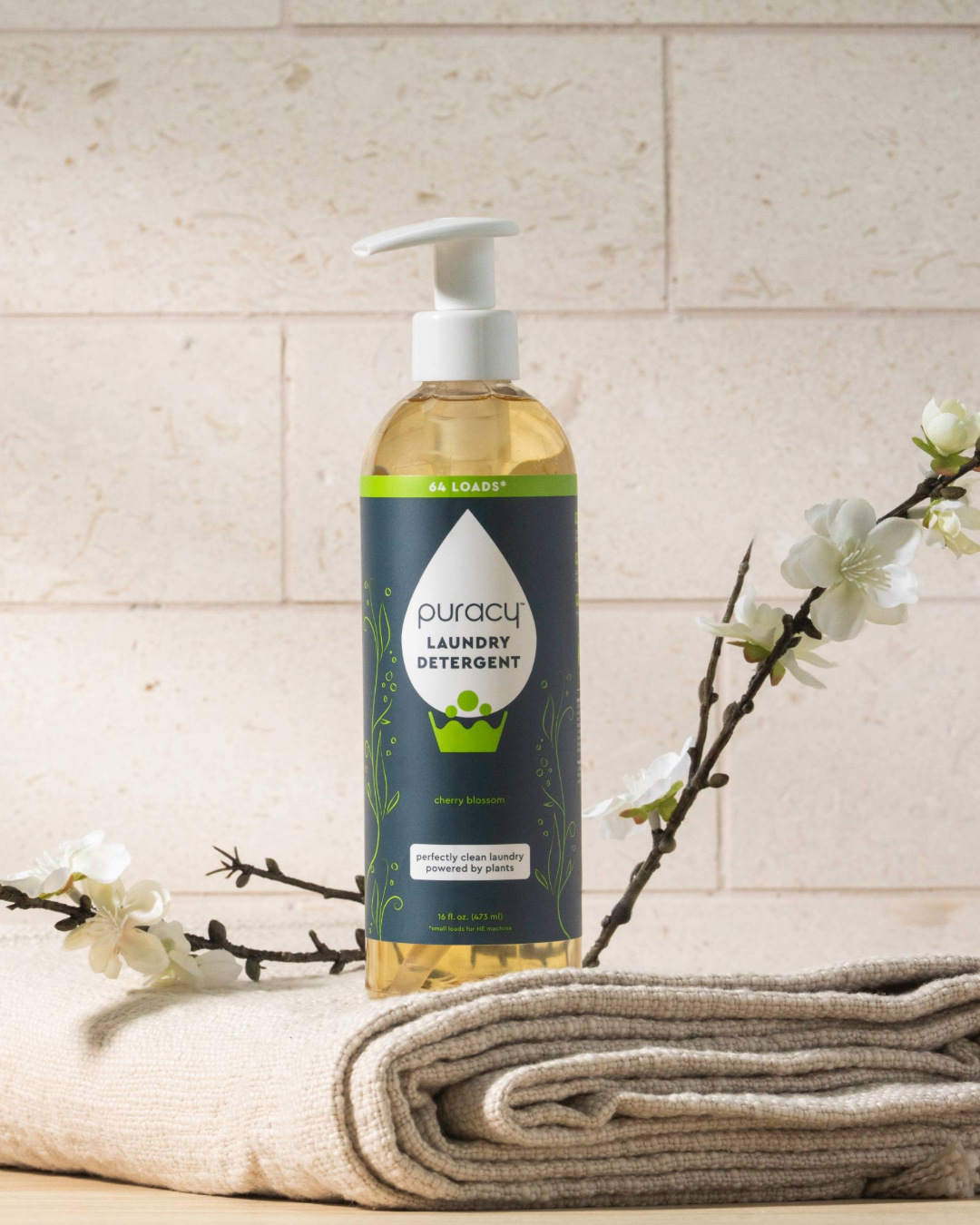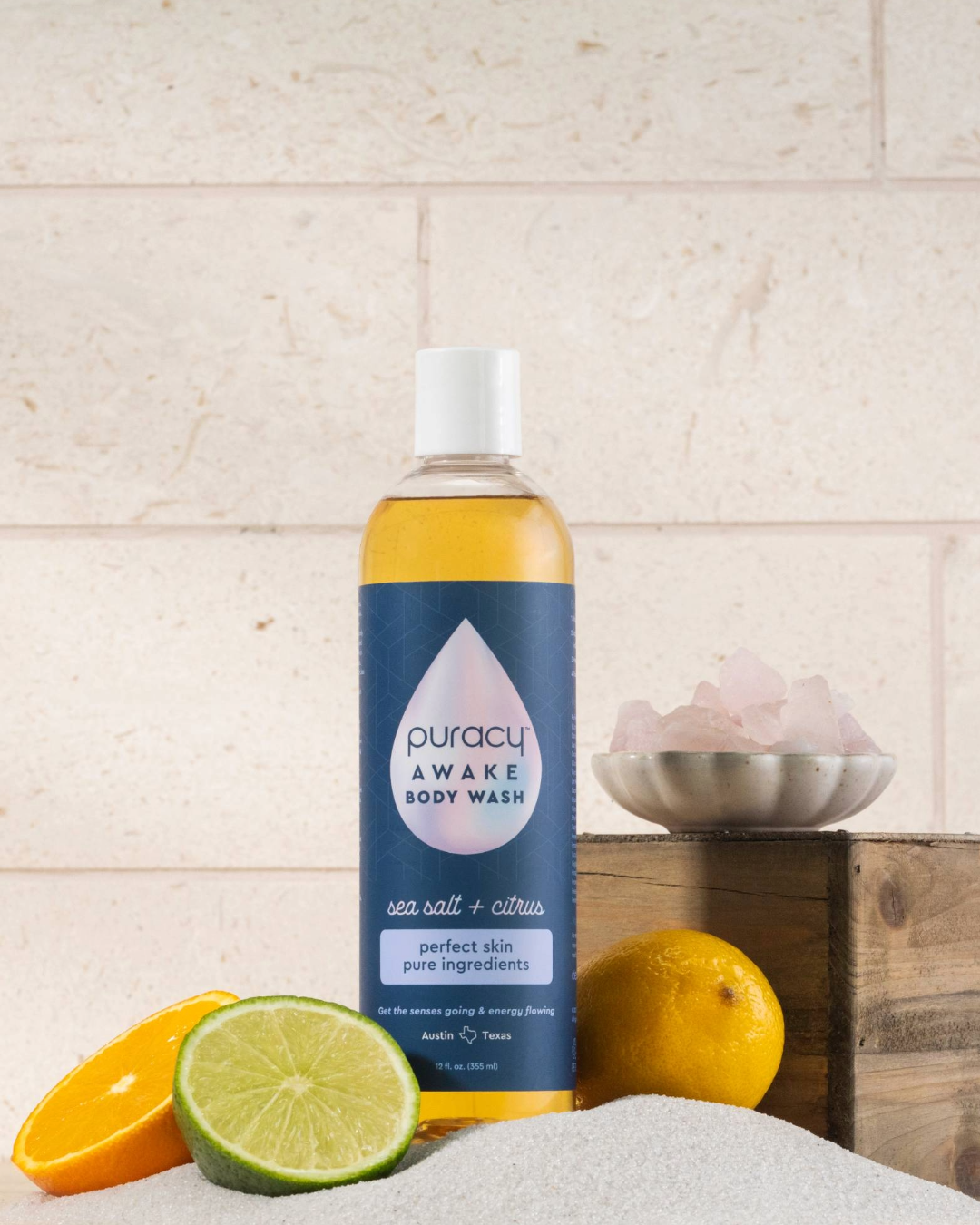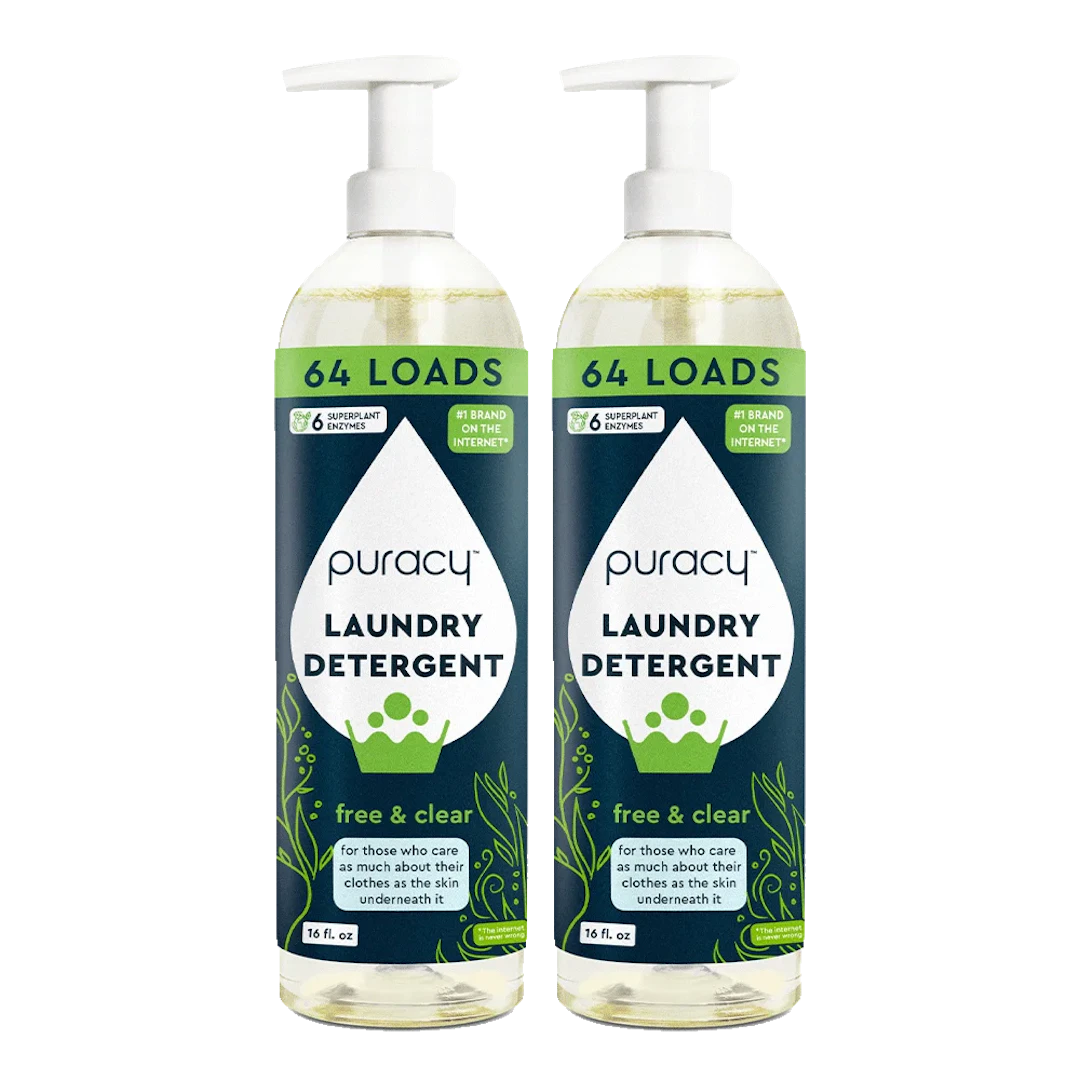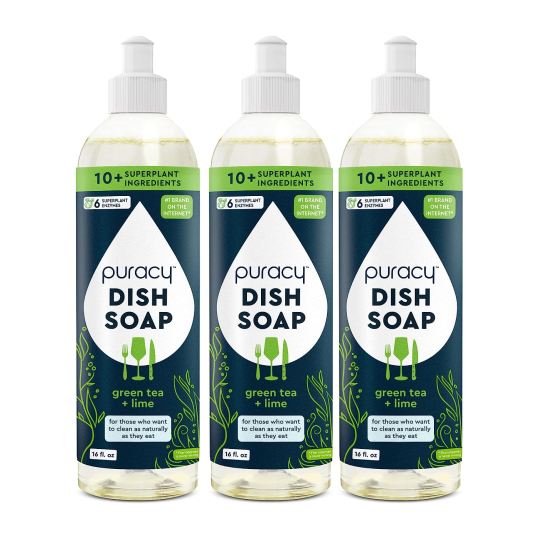
Vegetable Glycerin
What is vegetable glycerin? What is glycerin made from? Discover more about this ingredient, including how Puracy uses it in our products.
- Derived from: coconut
- Pronunciation: (\ˈglis-rən\)
- Type: Naturally-derived
- Other names: Glycerol
What Is Vegetable Glycerin?

Vegetable Glycerin is a natural ingredient made from a variety of palm oils, coconut, and soybean. Also referred to as glycerol, vegetable glycerin is a clear, fatty liquid most typically sourced from coconut, soy, or palm oil.[1] It's often a byproduct of the soap, candle, and biodiesel industries.[2] Naturally occurring in humans, animals, and plant matter, this ingredient mixes well with water and has a sweet taste.[3]
Note: Puracy is a 100% cruelty-free company that never uses animal by-products or palm oil. Our products only contain coconut-based glycerin.
What Is Vegetable Glycerin Used for?

Vegetable glycerin is a skin conditioner that helps keep skin soft and supple. It's one of the most common ingredients in personal care products, including moisturizer, body wash, shampoo, soap, mouthwash, styling gel, and makeup. It's often used as a humectant to prevent moisture loss in products. [1]
Glycerin can also act as a solvent, adhesive, cake icing component, and even food plasticizer.[2]
Benefits
Thanks to its ability to reduce skin inflammation, vegetable glycerin is beneficial when it comes to acting as a moisturizer and relieving dry or irritated skin. Vegetable glycerin can also inhibit bacterial growth and can be used to help heal wounds or scars.
Vegetable glycerin is preferred to other humectants such as butylene glycol and glycerin because it hydrates the skin and keeps skin smooth using natural ingredients.
When Was Glycerin Discovered?

German chemist Carl Wilhelm Scheele first discovered and isolated glycerin in 1778 when he was saponifying olive oil with lead oxide. In 1813, French chemist Michel Eugene Chevreul proved that fats are glycerin esters of fatty acids. He gave glycerin its name, based on the Greek word for “sweet.”[2]
How Is Vegetable Glycerin Made?

Vegetable glycerin is commercially produced from fats and oils or through the fermentation of yeast or starch, and it occurs naturally in fermented products such as beer, wine, and vinegar.
Most vegetable glycerin is a byproduct of soap manufacturing. Vegetable oil is heated with a strong alkali such as sodium hydroxide (ie. lye). Manufacturers may also produce it by heating coconut, soy, or palm oil under pressure with water so that the glycerin splits off into the water. The distillation process is then used to isolate glycerin.[3]
Synthetic Production of Glycerin
Synthetic production of glycerin may begin with allyl chloride, acrolein, propylene oxide, sugar, certain polyalcohols, fats, or epichlorohydrin.
In one method, the manufacturer oxidizes allyl chloride with hypochlorite to produce dichlorohydrin (and converts it to epichlorohydrin). The producer hydrolyzes the epichlorohydrin to yield a glycerin solution, then distills it to separate the water and glycerin. Glycerin is further refined to remove colors or odors. [2]
Vegetable Glycerin Safety

The Environmental Working Group has awarded this ingredient with a 1-2, depending on its use. [4] Whole Foods has also determined that the ingredient is acceptable in its body care quality standards.[5] Further studies show the ingredient is not a skin or eye irritant or sensitizer.[6,7]
- Skincare: Low Risk
- Cosmetics: Low Risk
- Haircare: Moderate Risk
- Environmental Impact: High Risk
Side Effects of Vegetable Glycerin
Possible side effects of vegetable glycerin include headaches, nausea, and dizziness when ingested at a concentration over 0.1%. As a form of sugar alcohol, glycerin is not fully absorbed by the body and consuming an excessive amount can lead to diarrhea or gas.
Safety in Humans and Animals
The FDA states vegetable glycerin is safe for human consumption, though it is possible to be allergic to glycerine. Vegetable glycerin is also safely tolerated by animals, including cats, dogs, and other pets, and it can be metabolized and used as an energy source without compromising their health.
Frequently Asked Questions

Is vegetable glycerin the same as vegetable glycerol?
There is no chemical difference between vegetable glycerol and vegetable glycerin, and they both refer to the same compound, propane-1,2,3-triol.
Is vegetable glycerin the same as vegetable oil?
No, vegetable oil can be one of the sources of vegetable glycerin and it contains other substances as well as glycerin.
Is vegetable glycerin made of sugar?
Vegetable glycerin is a sugar alcohol and not a sugar. Sugar alcohols do not have the same effect on blood sugar as normal sugar and they have a glycemic index score of zero.
Sources
[1] Cosmetics Info
[2] American Cleaning Institute
[3] U.S. Department of Agriculture
[4] Environmental Working Group
[5] Whole Foods Body Care Quality Standards
[6] Hine, CH, Anderson, HH, Moon, HD, Dunlap, MK, and Morse, MS. “Comparative toxicity of synthetic and natural glycerin.” A.M.A. Archives of Industrial Hygiene and Occupational Medicine. 1953;7(4):282-291
[7]Becker LC, Bergfeld WF, Belsito DV, Hill RA, Klaassen CD, Liebler DC, Marks JG Jr, Shank RC, Slaga TJ, Snyder PW, Gill LJ, Heldreth B. "Safety Assessment of Glycerin as Used in Cosmetics." Int J Toxicol. 2019 Nov/Dec;38(3_suppl):6S-22S. doi: 10.1177/1091581819883820. PMID: 31840548.
